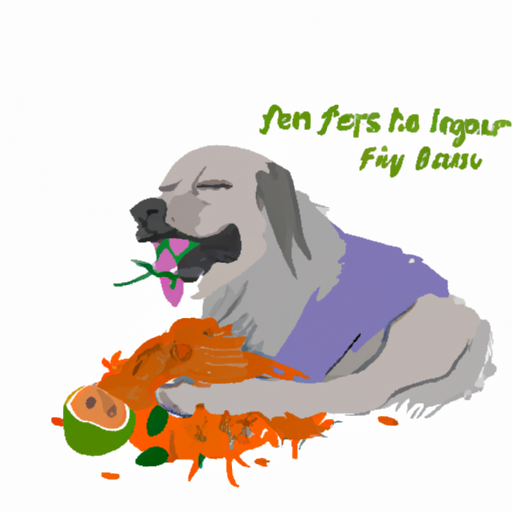As a pet owner, you play a critical role in maintaining the health and wellbeing of your furry friend. One of the essential components of a balanced diet, fiber, might often be overlooked. This article aims to provide a comprehensive guide on how to increase the fiber content in your dog’s diet.
Why Is Fiber Important for Dogs?
Fiber is a type of carbohydrate that isn’t fully digested by your dog’s body. It may seem counterintuitive, but this indigestibility is why fiber is so important.
- Digestive Health: Fiber adds bulk to your dog’s diet, aiding in controlling bowel movements. It can help alleviate both constipation and diarrhea.
- Weight Management: High-fiber foods are typically low in calories and can help your dog feel full without overeating, thereby aiding in weight management.
- Blood Sugar Control: Fiber can slow down the absorption of sugar into the bloodstream, helping to regulate blood sugar levels. This can be particularly beneficial for dogs with diabetes.
Types of Fiber
There are two main types of fiber to consider when planning your dog’s diet: soluble and insoluble.
-
Soluble Fiber: Soluble fiber dissolves in water and forms a gel-like substance in the stomach, which can help regulate blood sugar and lower cholesterol levels. Good sources include oats, peas, beans, apples, citrus fruits, carrots, barley, and psyllium.
-
Insoluble Fiber: Insoluble fiber doesn’t dissolve in water. It adds bulk to the diet and helps prevent constipation by moving material through the digestive system more quickly. Good sources include whole grains, wheat bran, corn bran, seeds, nuts, barley, couscous, brown rice, bulgur, zucchini, celery, broccoli, and cabbage.
How to Incorporate More Fiber into Your Dog’s Diet
Incrementally adding more fiber to your dog’s diet is a balancing act. Too much too soon can lead to gastrointestinal issues like bloating and gas. Here’s how you can do it:
-
Introduce High-Fiber Foods Gradually: Begin by adding a small amount to your dog’s diet and gradually increase it over several weeks. This allows your dog’s digestive system to adjust.
-
Monitor Your Dog’s Reaction: Keep an eye on your dog’s stool consistency and frequency. If you notice any sudden changes, it may be a sign that you’re adding too much fiber too quickly.
-
Consult with a Vet: It’s always a good idea to consult with your vet before making significant changes to your dog’s diet.
High-Fiber Foods for Dogs
Here are some high-fiber foods that are safe for dogs and can be incorporated into their diet:
| Food | Fiber Content (Per 100g) |
|---|---|
| Cooked Green Beans | 4g |
| Cooked Sweet Potato | 3g |
| Cooked Pumpkin | 3g |
| Cooked Carrots | 3g |
| Cooked Peas | 5g |
| Cooked Broccoli | 3g |
| Apples (without seeds) | 2.4g |
Frequently Asked Questions
Can too much fiber be harmful to my dog?
While fiber is beneficial, too much can lead to digestive problems such as bloating, gas, and diarrhea. Always introduce fiber gradually and monitor your dog’s reaction.
Can I use human fiber supplements for my dog?
Some human fiber supplements can be safe for dogs, but always consult with your vet before introducing any new supplements into your dog’s diet.
What are some high-fiber dog food brands?
There are several high-fiber dog food brands available, including Blue Buffalo, Nutro, and Royal Canin. Always check the nutritional information to ensure the food meets your dog’s dietary needs.
How much fiber should my dog have each day?
The amount of fiber a dog needs can vary based on size, age, and health. Generally, a dog’s diet should consist of about 2-5% fiber. Consult with a vet for the most accurate information.
Can all dogs eat the same high-fiber foods?
Not all high-fiber foods are safe for dogs. For example, some nuts and seeds can be harmful. Always research and consult with a vet before introducing new foods into your dog’s diet.
By understanding the importance of fiber and how to safely incorporate it into your dog’s diet, you can help support their overall health and wellbeing. Remember, when in doubt, always consult with a professional.
In conclusion, a diet rich in fiber can provide numerous benefits for your dog. By following the advice in this guide, you can ensure your furry friend is getting the right amount of fiber in their diet.



